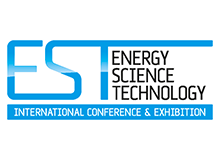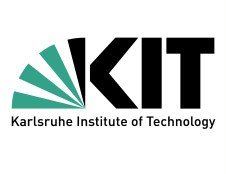Systems, Storage & Grids
Fast expansion of centralized and decentralized renewable energy production with individual characteristics of availability and controllability creates new and ambitious demands on energy storage and distribution. This concerns electric and thermal power as well as fuels and gases.
With the fluctuation and possible oversupply of electrical power, which is generated by renewable energy sources like sun or wind, the capacity of storage gains an important role in a future sustainable energy system. In that aspect the conversion of energy for safe storage and fast availability is gaining in importance. Innovative and advanced materials open up new possibilities of fulfilling those particular tasks.
The increasing complexity of the systems and grids with all its connected components has to be managed in an efficient and reliable way.
Due to this complexity information and communication technologies (ICT) are applied to simulate, plan, operate and optimize those networks.
At the EST 2015 experts from many different disciplines will present the newest developments in the field of systems, storage and grids and will discuss about technologies, potentials, chances and risks.
Electrochemical energy storage
Rechargeable batteries are currently the most widely used technology for storing electricity. The increased number of mobile devices and the growing e-mobility sector as well as the use of photovoltaics for own consumption lead to a large demand for batteries of all different sizes. High quality batteries are still expensive and need valuable (partly scarce) resources. Challenges to face are self-discharge, limited number of charging cycles, length of charging time and a desired high capacity per volume or weight. The EST is interested in latest research and innovation concerning electrochemical energy storage (including innovative materials and technologies like redox-flow or nanowire) and in results of prototype and large-field applications.
Chemical energy storage and synthetic fuels (PtX, hydrogen transformation, ...)
One possibility of storing (surplus) electricity in large-scale (grid) dimensions is chemical energy storage. Mainly it is based on catalysis or catalytic processes. This EST topic includes Power-to-Gas (PtG or P2G) and Power-to-liquid (PtL) concepts as well as the general production of synthetic fuels for energy storage (e.g. by Fischer-Tropsch conversion).
Mechanical storage of electric power
Mechanical energy storage makes use of transforming electricity into mechanical (potential, kinetic) energy and retransforming it into electricity by generators. Pump-storage power plants are known large-scale applications, which are used in several countries to stabilize power grids or to store surplus electricity.
Other concepts are air-pressure-storages and flywheels, but are they of use in large dimensions? The EST 2015 would like to present the newest research and innovation in the field of mechanical storage and discuss about its potentials.
Thermal energy storage
A future energy system has to consider thermal energy storage as well. Especially with energy production from solar radiation (solar thermal and PV) there is a surplus of energy in many countries during the summer period. This energy should not be wasted, but stored for a later usage. Seasonal energy storages, which store heat longer that two or three days, need a relevant size (especially in large-scale applications). Sensitive, latent and absorption processes can be used for thermal energy storage. Enhanced materials are objects of current research for optimizing charging times and storage capacities. The keyword “Power-to-Heat” (PtH or P2H) describes the conversion of electricity into heat for direct use or storage purposes.
Storage in gas grids
The production of biogas or syngas by renewable energy sources or (surplus) power creates the possibility of using the large existing gas grids as a large energy storage. Is the current infrastructure ready for this? What are the potentials, the limits, the challenges, the barriers and the possible solutions? What can research and innovation contribute? Is the merging of gas- and power-grids a useful option and how can it be put into execution?
Hydrogen (production, storage, use … )
This topic includes all aspects of production, storage and use of hydrogen. Relevant keywords are electrolysis, water splitting, artificial photosynthesis and proton reduction.
Electric grids and network integration at all levels
This EST topic focuses on the electric grids and the integration of components at all levels: from the power generation at a plant, through the distribution by high-voltage power lines and transformation substations to the delivery at the customer’s location. A current discussion is, to what extent the existing grids are capable to handle the future changes in centralized and decentralized power generation and how they have to be changed.
ICT for controlling infrastructures
As infrastructure for energy production, storage and distribution becomes constantly more complex, ICT is gaining importance in all fields. The EST 2015 would like to discuss questions like: Which are current developments in software and algorithm research? How “intelligent” is software nowadays and can self-learning management tools take over tasks from human operators? Which are the security and privacy issues? Which role do the “Internet-of-things” or smart devices (phones, tablets) play in this field? What can we learn from simulation tools?
Capacitors and supercapacitors
A capacitor (or condenser) is a passive two-terminal electrical component, which stores energy electrostatically in an electric field. In difference to that, supercapacitors (SC) or ultracapacitors are electrochemical capacitors.
EST 2015 invites you to present your latest findings in research, development and application and discuss with an interdisciplinary audience the role and potential of (super-) capacitors in our energy systems and grids.
Conductor Materials
An important task within the energy system of the future is to guarantee safe, reliable and flexible power transmission with energy losses reduced to a minimum. In this context conductor materials play an important role. Conductors are also a relevant component in electric motors and power transformers (like converters or inverters). This EST topic includes research on superconduction and its benefit for the energy sector.
Carbon Capture and Storage / Carbon Sequestration
A concept for reducing the impact of processes based on fossil fuel (particularly power generation) on climate change is to separate the carbondioxide from the exhaust air after the combustion step. Then the CO2 is pressed into ground for a permanent storage.
The capturing can be done in a very efficient way (95% CO2 are captured), but it is expensive, reduces the efficiency of the plants and is an inertial process.
Energy System Analysis and Modelling
The more complex energy systems become, the more difficult it becomes to plan them in an optimised way, to predict their behaviour and to operate them efficiently. The tremendously grown computing power of even small and cheap computers enables both, analysis and simulation (by dynamic models) in a very small time resolution and in an interdisciplinary way.
Other infrastructural systems
If you think your topic on “Systems, Storage and Grids” does not fit in the categories above, don’t hesitate to hand in your abstract and assign it to this subtopic. The Scientific Programme Committee will review your abstract and see, if it is relevant to the scope of our conference.









